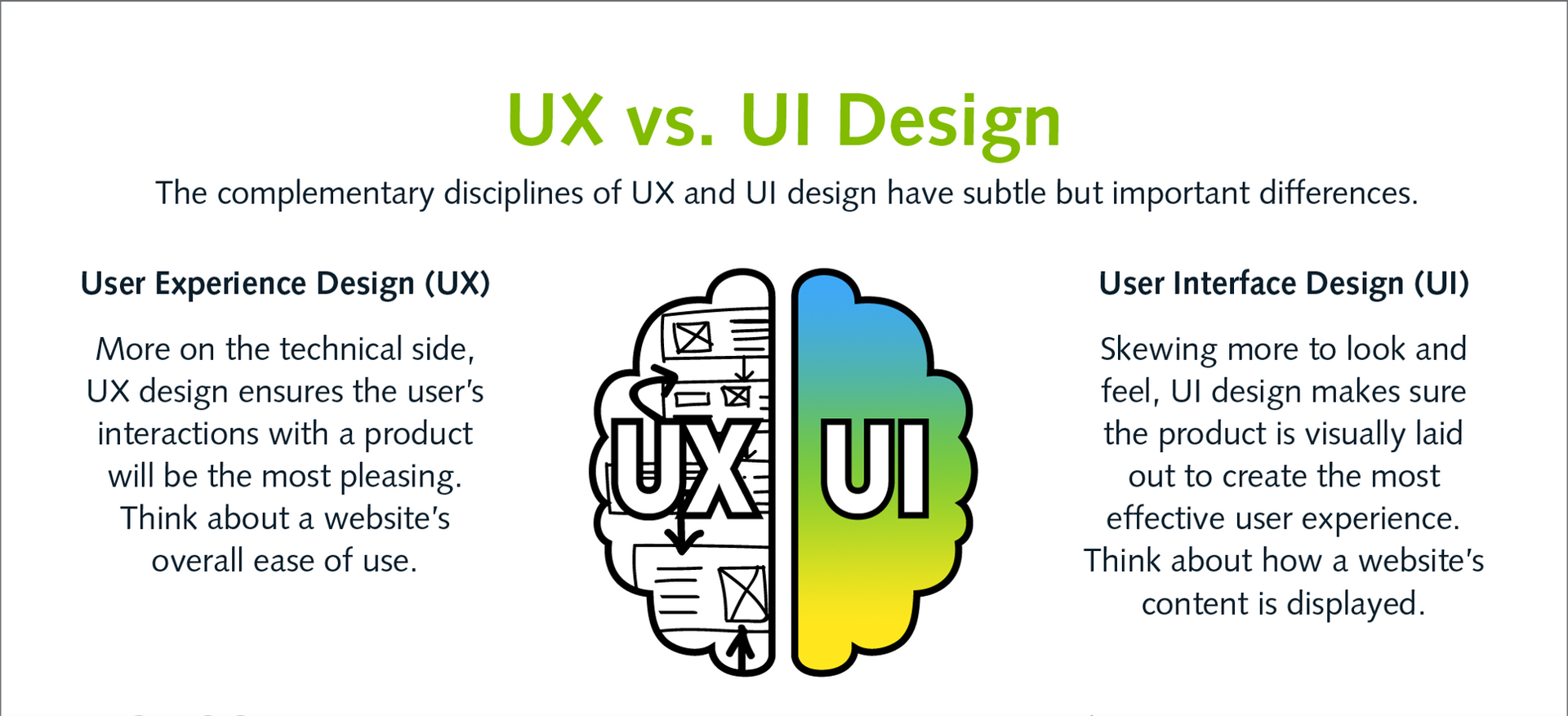
What’s the difference between user interface and user experience?

What is UI?
User interface (UI) is anything a user may interact with to use a digital product or service. This includes everything from screens and touchscreens, keyboards, sounds, and even lights. To understand the evolution of UI, however, it’s helpful to learn a bit more about its history and how it has evolved into best practices and a profession.
Today’s UI designer has nearly limitless opportunities to work on websites, mobile apps, wearable technology, and smart home devices, just to name a few. As long as computers continue to be a part of daily life, there will be the need to make the interfaces that enable users of all ages, backgrounds, and technical experience can effectively use.
What is UX?
User experience, or UX, evolved as a result of the improvements to UI. Once there was something for users to interact with, their experience, whether positive, negative, or neutral, changed how users felt about those interactions.
UX designers are responsible for ensuring that the company delivers a product or service that meets the needs of the customer and allows them to seamlessly achieve their desired outcome.
UX designers work closely with UI designers, UX researchers, marketers, and product teams to understand their users through research and experimentation. They use the insights gained to continually iterate and improve experiences, based on both quantitative and qualitative user research.
What's the difference between UI and UX?
At the most basic level, UI is made up of all the elements that enable someone to interact with a product or service. UX, on the other hand, is what the individual interacting with that product or service takes away from the entire experience.
User Interface (UI):
- Focus: UI design primarily deals with the visual elements and interactive components of a product, concentrating on its look and feel.
- Components: UI includes elements like buttons, icons, menus, forms, layouts, colors, typography, and other visual design aspects.
- Goals: The main goal of UI design is to create an aesthetically pleasing and user-friendly interface. It's concerned with making the product visually appealing and ensuring that the user can easily interact with it.
User Experience (UX):
- Focus: UX design focuses on the holistic experience of the user when interacting with a product, considering all aspects of their journey.
- Components: UX encompasses various elements, including information architecture, user flows, wireframes, usability, accessibility, and user research.
- Goals: The primary goal of UX design is to optimize the overall user experience. It aims to ensure that users can efficiently and effectively accomplish their goals when using the product. UX designers consider the entire user journey, from the moment a user lands on the product to when they achieve their desired outcome.